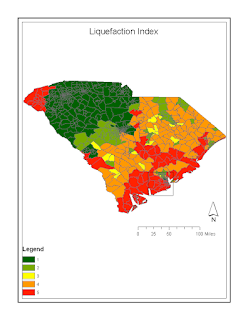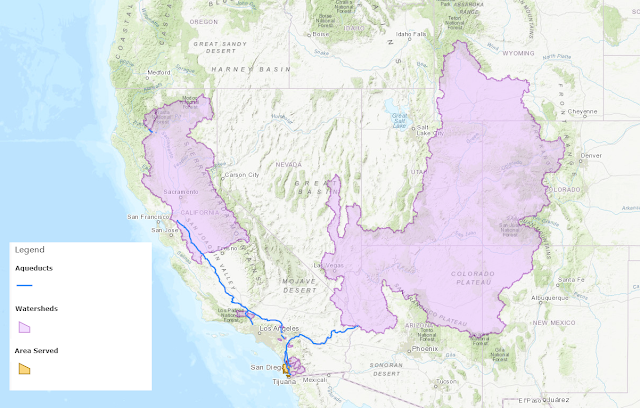Liquefaction as it relates to Wetland Ecosystems
I chose to base my project on liquefaction on the effects it had on wetland ecosystems. I went into this project questioning the damage that would follow any seismic event and the economic impact that would have on local populations but came out with an entirely new interest.
 With 90 liquefaction sites in this area, 16 intersected with wetlands. The primary wetland type intersected was Freshwater Forested/Shrub lands while of the 2 types of liquefaction, the dominant in intercepted was crater filled.
With 90 liquefaction sites in this area, 16 intersected with wetlands. The primary wetland type intersected was Freshwater Forested/Shrub lands while of the 2 types of liquefaction, the dominant in intercepted was crater filled.
 With 90 liquefaction sites in this area, 16 intersected with wetlands. The primary wetland type intersected was Freshwater Forested/Shrub lands while of the 2 types of liquefaction, the dominant in intercepted was crater filled.
With 90 liquefaction sites in this area, 16 intersected with wetlands. The primary wetland type intersected was Freshwater Forested/Shrub lands while of the 2 types of liquefaction, the dominant in intercepted was crater filled.
The data really didn't display any correlation between the liquefaction and wetland location/prevalence. It did raise a potential future research project though: "Could it be possible that crater filled areas provide suitable land for wetland growth? I spoke to my professor in Wetland Ecology & Management and while he said there's never been a study done on that idea, it could make sense, since wetlands need broken up soil to properly function and therefore a liquefaction event could allow for suitable conditions.
While my initial study failed, I wanted to check a few more data types to see if there was anything else that stood out so I referenced the soil types in the area and found mostly loams and sandy loams, which are all moderately well drained soil classes.
I checked historical earthquake data to see if it had any impact on either the liquefaction events or wetland location and while there was a magnitude 7.2 in the year 1886, there was only one major earth quake in recorded time so it didn't seem to have a huge impact on either liquefaction events or wetland location.
So, out of ideas on anything causing damage to the wetlands in regards to liquefaction, I went ahead and continued the ecosystem assessment of the wetlands by simply sorting it into categories and using the Millennium Ecosystem Assessment to put a price tag on the land.
Using this price tag, so to speak, you can see that by multiplying the 46,358ha of just the Freshwater forested/shrub wetlands, you can get an economic benefit of $9,549,748 in just 42mi2 of land.
If you take it a step further, since the topic is about wetland economic impact, and not one specific type, then the total value of the wetlands within that area is $59,807,622.5 per year and that's using data from the MEA's 2000 assessment. Wetland value has only risen since then.
So, ultimately, there would be value in taking note on the manners in which wetlands are affected, be it their formation or destruction from other geologic processes...a lot of value.







Comments
Post a Comment